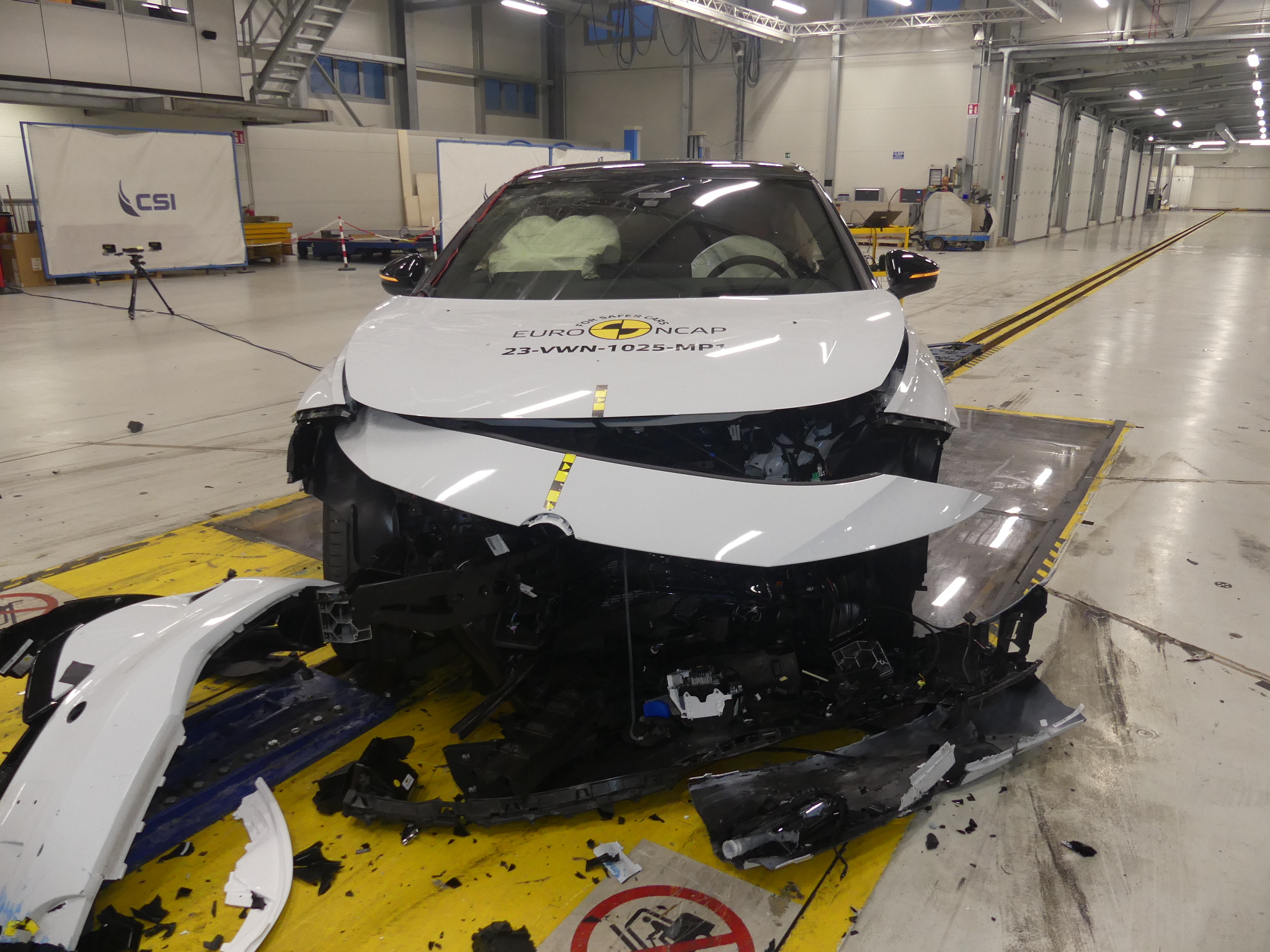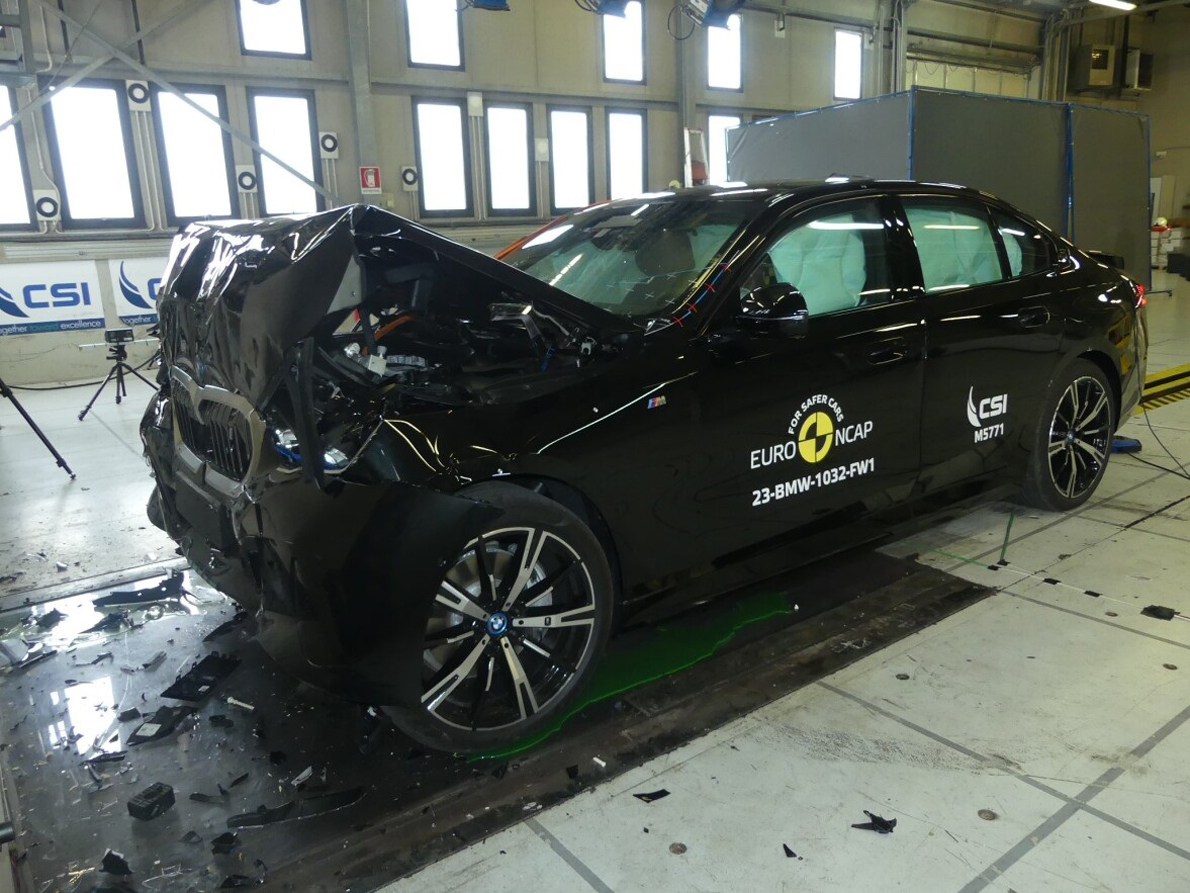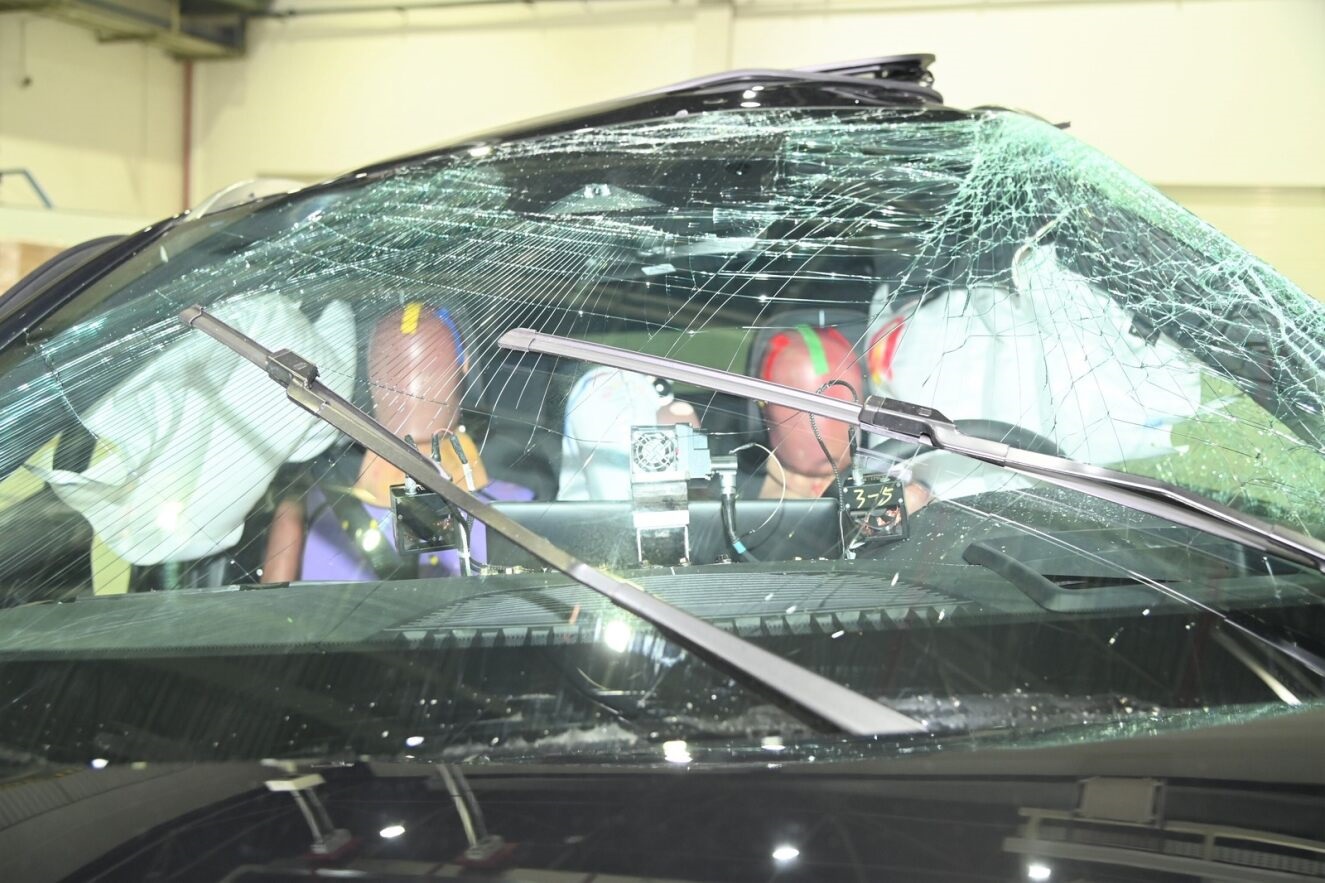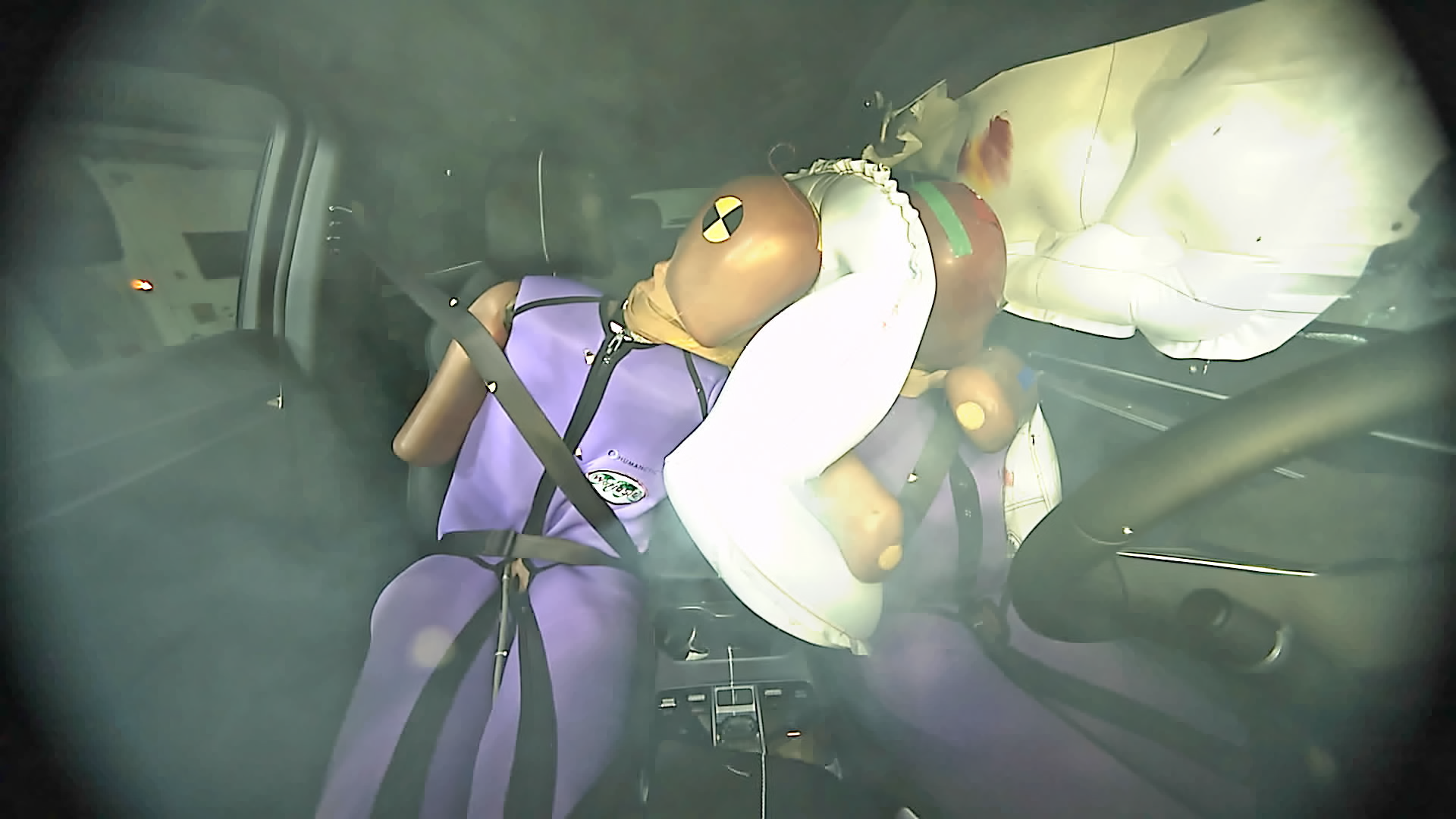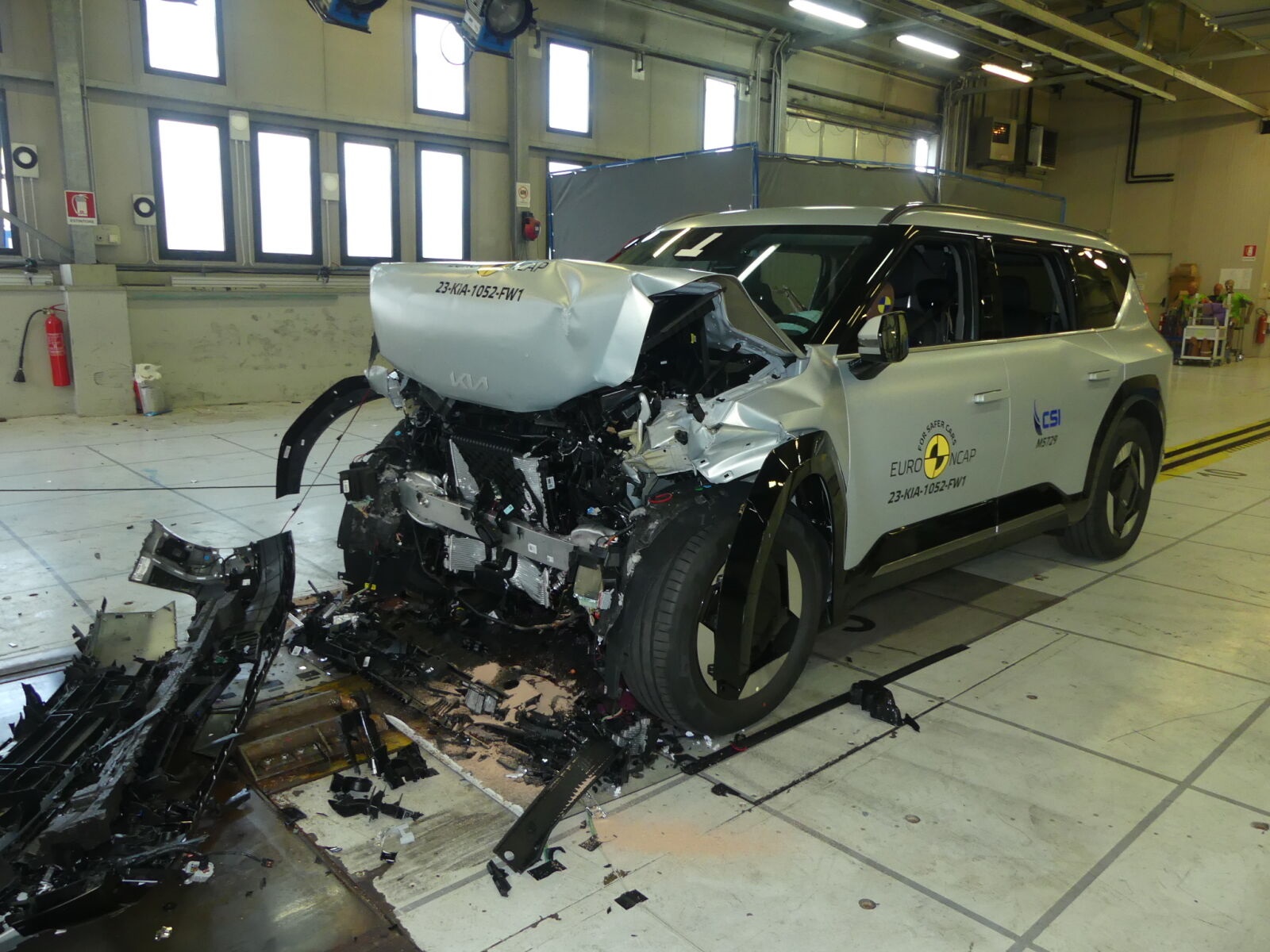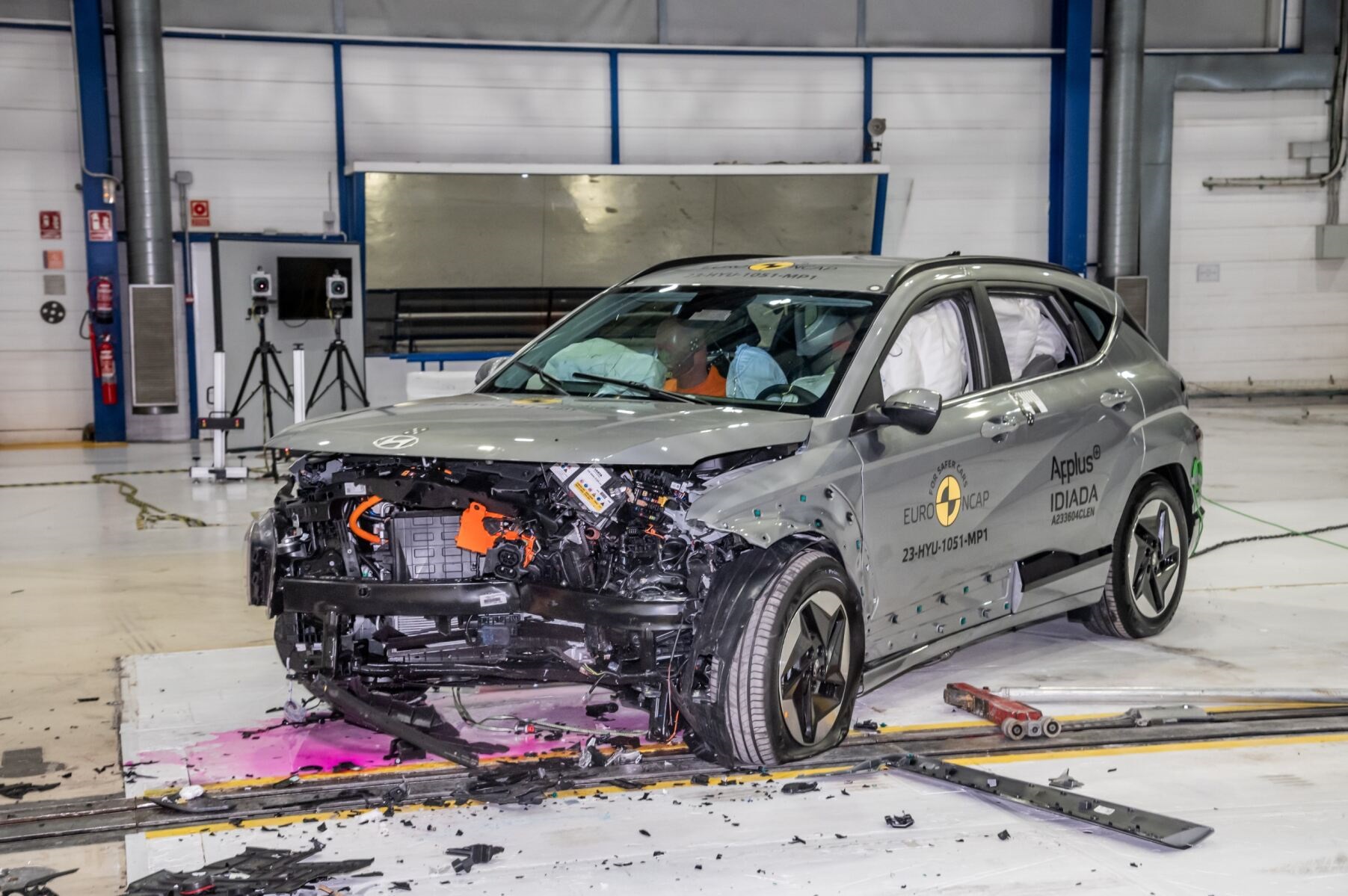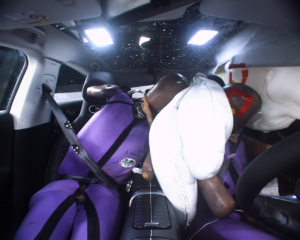
Heavier, taller vehicles causing concern in Europe, echo U.S. risk warnings
By onInternational
The European New Car Assessment Programme (Euro NCAP) has identified a trend in manufacturing vehicles — especially electric vehicles, SUVs, and trucks — which are heavier, more powerful, and taller, as a risk for drivers in other vehicles and on the environment.
Euro NCAP evaluated 11 models:
-
- Volkswagen ID.7, mid-size electric four-door — 5-star rating;
- BMW i5 eDrive40, a large family car — 5-star rating;
- Mercedes EQE 350 4MATIC electric SUV — 5-star rating;
- BYD TANG SUV — 5-star rating;
- Kia EV9, three-row EV — 5-star rating;
- XPENG G9, a large SUV — 5-star rating;
- VinFast VF8, a large SUV — 4-star rating;
- Geely Holding smart #3, a small family car — 5-star rating;
- BYD SEAL-U, a small SUV — 5-star rating;
- Honda ZR-V, a small SUV — 4-star rating;
- Hyundai KONA, a small SUV — 4-star rating
According to the findings, only three of the 11 vehicles weigh less than 2 tonnes (4,409 pounds) and only one, the smart #3, is classified as a small family car.
The preference for larger and/or heavier vehicles isn’t just a trend in Europe, it’s also ongoing here in the U.S. where the preferred car parc is SUVs and pickup trucks.
The average weight of a new vehicle sold in the U.S. last year was 4,329 pounds, which is about 175 pounds heavier than in the three previous model years and more than 1,000 pounds heavier than the average weight of 1980 MY vehicles, according to Bloomberg.
In 2021, the Insurance Institute for Highway Safety (IIHS) began using a new side impact test because SUVs were heavier, which meant increasing the weight of the barrier that runs into the vehicle and increasing its speed. Now, EV mass is the new challenge.
Late last year, IIHS tested its propulsion system to ensure that it could handle heavier EVs. It did so by adding 9,500 pounds of heavy steel plates and concrete blocks onto an F-150 and seeing whether it could reach the target speed of 40 mph for frontal, small, and overlap crashes on both sides of vehicles. The test proved the system successful in its ability to tow a vehicle in at thzat speed for the frontal crash.
During a special presentation at the Collision Industry Conference (CIC)’s April meeting in Richmond, Virginia, IIHS Senior Test Coordinator Sean O’Malley said the most recently weighed EV, a 2023 Rivian R1S, came in at more than 7,000 pounds — almost 3,000 pounds more than a 2023 Honda Civic. That’s a difference in weight equivalent to a 2023 Ford Ranger.
“The growing consumer demand for electric vehicles has opened opportunities for new entrants on the European market,” Euro NCAP said last week. “Several cars that were tested in 2023 were from Chinese manufacturers anxious to prove their relevance to European buyers. For the first time, the line-up also includes a car from Vietnam (VinFast).
“On the positive side, manufacturers, established or new, are responding well to the Euro NCAP requirements that came into effect at the beginning of this year and eight of the 11 vehicles received a five-star rating.”
Euro NCAP’s safety testing protocol was updated to include new systems in child presence detection, specifications for vehicle submergence as well as the latest technologies that detect and respond to motorcyclists and vulnerable road users, such as bicyclists and pedestrians.
The ability of a vehicle to protect occupants and vulnerable users during a crash (passive safety), to prevent or minimize the outcomes of a crash (active safety), and comprehensive information about post-crash rescue is now essential to achieve a high Euro NCAP safety rating.
The first vehicles to achieve a five-star rating under the new requirements were Chinese manufacturer NIO’s ET5 and the EL7.
“For years, Euro NCAP was accused of pushing up the weight of cars,” said Michiel van Ratingen, Euro NCAP secretary general. “It was thought that additional safety features meant extra mass. That was never really the case and the increase in vehicle weight we see nowadays is certainly not safety-related — it is down to consumer preference for larger vehicles and to electrification, with ever-bigger batteries being used to quell consumers’ range anxiety. But this is a trend that helps neither safety nor the environment: big, heavy cars are generally less energy efficient than small, light ones, and there is a safety concern when those two types of vehicles collide or, worse when vulnerable road users are involved.”
Euro NCAP said the Volkswagen ID.7, similar in size to the now-discontinued Passat, provides excellent all-round crash safety performance, including a 95% score in adult protection. In addition to protecting its passengers, the ID.7 also protects others outside the vehicle, Euro NCAP found.
Slightly smaller than its predecessor, the BMW 5 Series comes in at No. 2 for safety except not quite as good in pelvic and femur protection Euro NCAP’s frontal crash test.
Mercedes-EQ EQE, though Euro NCAP noted is hefty in weight and price tag, is, overall, very good in performance particularly in its safety assistance technologies. However, a central air bag system showed potential head injury for occupants in the front.
Two vehicles from Chinese automaker, BYD Auto Co., were also included in Euro NCAP’s year-end testing lineup — the BYD TANG and SEAL-U.
According to Euro NCAP, BYD has been one of the world’s largest battery producers for many years and an EV manufacturer in China for nearly a decade. Both vehicles have a good overall score and a five-star rating but the SEAL-U’s motorcycle automatic emergency braking (AEB) stood out, Euro NCAP said.
The Korean-manufactured Kia EV9, the automaker’s first three-row EV, is very large but comes with a range of child safety equipment and has a good dynamic performance, achieving a comfortable five-star score, Euro NCAP said.
Chinese-manufactured XPENG G9 received a double five-star rating with Euro NCAP and Green NCAP In safety testing, the G9 performed well overall, except for the small female driver dummy “submarining” in the full-width test, which allowed the dummy’s pelvis to slip under the lap portion of the belt and suggests higher risk of abdominal injury. Pedestrian head protection was not as good as many of the other cars tested but the G9 met the requirements for Euro NCAP’s five stars and was also awarded a five-star rating by Green NCAP.
Green NCAP is an independent initiative that promotes the manufacture of clean, energy-efficient, and environment-friendly vehicles.
The smart #3 is also manufactured in China by Geely and is the second electric SUV made by the company. Larger than previous vehicles made by Smart, there are still some challenges with under-performance in far-side protection and the front seat dummy occupants making contact in testing, Euro NCAP said. The vehicle is not equipped with child presence detection but still received a five-star safety score.
VinFast, a Vietnamese EV startup, recently began selling its first model in Europe — the two-row, five-seater VF8 SUV — which is also the first VinFast Euro NCAP has ever tested. The car achieved a four-star rating, let down by a lack of restraint system robustness but, otherwise, child and vulnerable user protection proved to be good, Euro NCAP said.
Honda’s small SUV, the ZR-V, is the only car in this round of testing that includes a pure hybrid powertrain. With its 1.6 tonne (3,527 pounds) curb weight, it was the lightest vehicle Euro NCAP rated. The ZR-V’s performance in both crash and active safety tests was just below the five-star performance thresholds, resulting in a four-star rating.
Last place and “the real disappointment in this release,” Euro NCAP said, was the Hyundai KONA, which received a four-star rating but was “lucky to avoid three stars.”
“This result is due to its substandard test performance, especially in driver assistance and crash avoidance,” Euro NCAP said. “Hyundai has made the car larger and its interior bigger to compete within its class, but the company should not assume that its customers are content with a level of safety which lags behind its competitors.”
Crash test video of each vehicle tested are available to view on Euro NCAP’s YouTube channel.
Images
Featured image: smart #3 far-side impact test
VW ID.7 mobile progressive deformable barrier test
BMW full-width rigid barrier test
BYD TANG far-side impact test
BYD SEAL-U far-side impact test
Kia EV9 full-width rigid barrier test
Hyundai KONA mobile progressive deformable barrier


